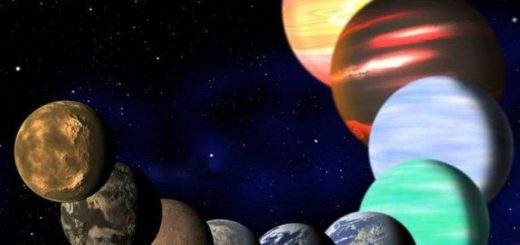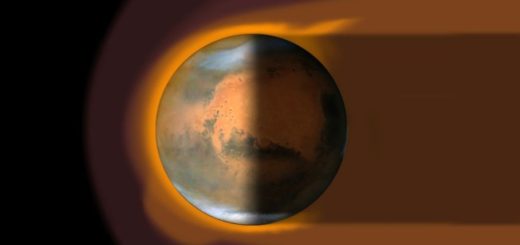160 Billion Exoplanets and Counting

They say every star up there has at least one planet zipping around it. Add it up and it means the Milky Way is home to 160 billion exoplanets, give or take. That’s too many.
Space, the final frontier, was so much more intriguing when we thought Earth was the only planet and even more endearing when we believed it was the center of the universe. Scientists had to go and spoil everything by populating the sky with not only galaxies but billions of them from here to kingdom come. Then they got it in their detectors to fill it up with planets. And just so we wouldn’t get these mixed up with our planet they called them exoplanets.
They believe they have found about 700 or so of these balls of gas, rock or roquefort orbiting either astonishingly close to their mother stars, absurdly far, or within the so-called Goldilocks zone, temperature 22 Celsius and with a Club Med. Another 2,300 or so have been detected and will be confirmed. All this in just 20 years of painstaking discovery.
Now they claim that each star out there, roughly 100 billion in our galaxy alone, has maybe 1.6 buddy planets. (The leftover 0.6 of a planet has to look like the half-built Death Star of “Star Wars.”) Scientists are so confident in their findings (using voodoo gravitational microlensing) that they say each twinkling speck may have considerably more than 1.6 planets in regal orbit, like 2.3 or 4.1 or you name it, sky’s the limit.
The point is the Milky Way is a very, very crowded place. We ought to be uncomfortable with this amusing, but grave finding.
Jumping up and announcing that not only are we not the bee’s knees of the galaxy — our elegant star and its fairly calm family of planets — but that planets are a dime a dozen, well, that rankles. It’s as if someone suddenly drove up in a nicer, more powerful Mustang than yours and honked an invitation to race. The fear is that some new kid on the block will leave us in the dust.
Note that there are people out there (I guess I mean “on here”) who don’t give a hoot about the planet or the stars or the universe, for whom this news will leave them cold. Then there are those who don’t think we really have to worry about some guys from hoods light years away (we have time to muscle up), for whom the planetary population explosion will again elicit perhaps a shrug.
But what about those patently amusing folks who continue to listen fervently at their crystal radio sets for a signal from just one of those suburbs out there basking in the warmth of other stars? News like this — that the galaxy is bristling with potential broadcast platforms — will only embolden these go-go pioneers. Hand them 160 billion planets and what will they say? What they’ve been saying all along: They just have to be out there — meaning them.
So get ready, people, cause here they come. Already, 2012 (the year the world is supposed to end anyway) is rife with UFO sightings, dozens of them a month in the United States alone. This stuff goes on night after night after night, with normal individuals spotting all kinds of shapes hovering or whizzing through the air: star-like, circle, triangle, disc, oval, fireball, square/rectangular, cylinder, flash, cigar, boomerang, diamond, egg, bullet-missile, chevron, Saturn-like, cone, cross, teardrop and blimp, according to the Mutual UFO Network. It’s an veritable invasion of zapping and blinking that speaks of a world on edge.
Speaking of night lights, now the same crowd of people who are dazzled by all these exoplanets claim they’re going to fine-tune their search: Instead of just listening for radio shows, earth hunters are thinking of looking for city lights. If that distant world were covered with as many lights at night as ours, well, it ought to be visible. And so we focus our binoculars ever more tightly and squint our eyes, gazing. Maybe, just maybe, we’ll see the “other” Tokyo, or Paris!
It’s a dazzling, if fraught time of discovery, no doubt about it. Little do most terrestrials know that the very first exoplanets were discovered, way back in 1992, whizzing around a pulsar with the unforgettable name of PSR B1257+12, which lies 2,000 light years away. This insanely compact neutron star (maybe 30 kilometers in diameter) spins once every 6.22 milliseconds (or 9,650 rpm). That’s a Virgo lighthouse on a galactic hit of LSD, electromagnetically speaking. The three planets (maybe four) in orbit around this vivid show-off are forlornly cold worlds shorn of their atmospheres, all melted down and very dark. How could they be otherwise?
If exoplanets aren’t of this variety, then they’re bloated up way bigger than Jupiter, orbit right up against their stars, and have blazing atmospheres of gaseous metals. Get to the gym and change your music. Others hang around in the neighborhood of Earth’s size — bigger, close-to-same, smaller — but again mostly too close to their suns, too. Get away from your mother and get a life.
And that, folks, is exoplanets for you: Somehow they’re suddenly like 160 billion wired-up little dogs yapping for your attention. Surely mankind doesn’t need that many friends.



 Creators of mankind
Creators of mankind Description of “Tall white aliens”
Description of “Tall white aliens” Where they came from?
Where they came from? About hostile civilizations
About hostile civilizations The war for the Earth
The war for the Earth “Tall white aliens” about eternal life
“Tall white aliens” about eternal life Video: “Nordic aliens”
Video: “Nordic aliens” Aliens
Aliens Alien encounters
Alien encounters The aliens base
The aliens base UFO
UFO Technology UFO
Technology UFO Underground civilization
Underground civilization Ancient alien artifacts
Ancient alien artifacts Military and UFO
Military and UFO Mysteries and hypotheses
Mysteries and hypotheses Scientific facts
Scientific facts


















